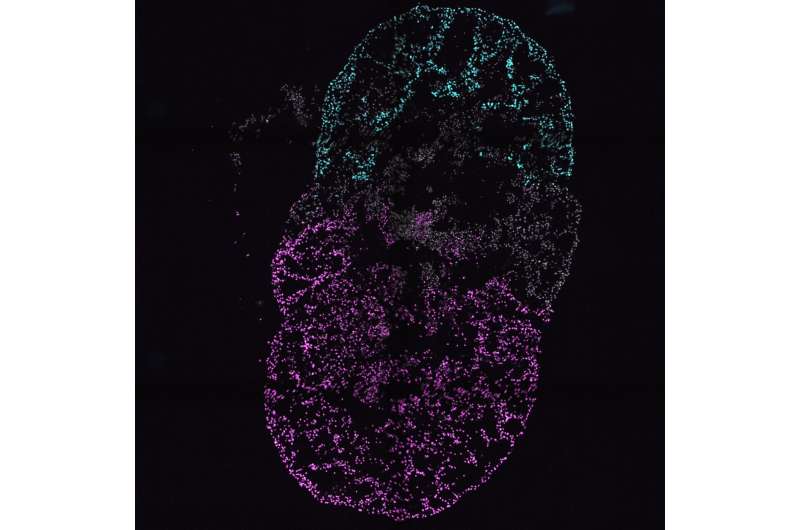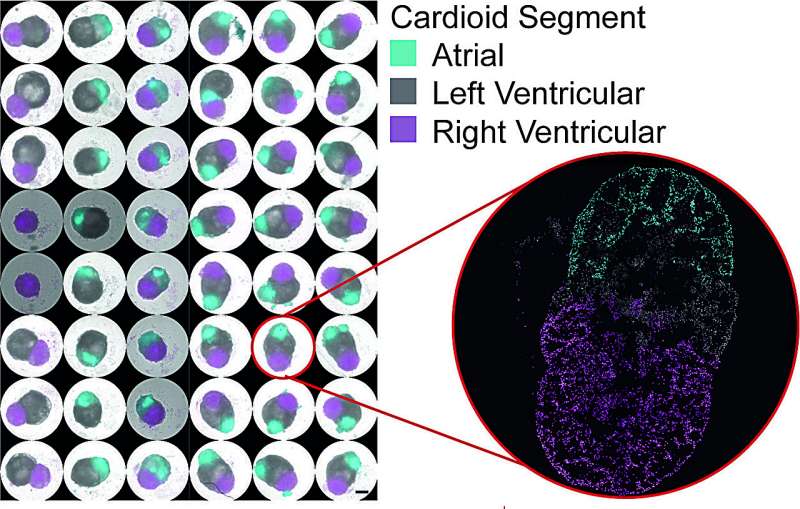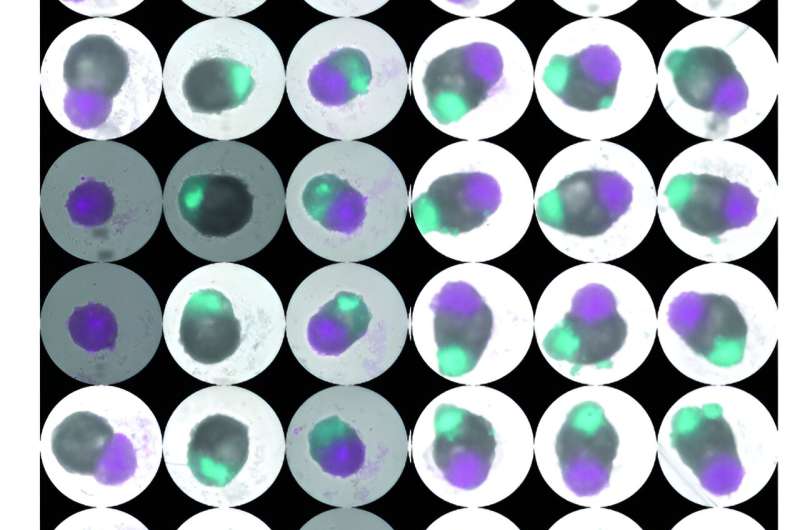This article has been reviewed according to Science X's editorial process and policies. Editors have highlighted the following attributes while ensuring the content's credibility:
fact-checked
peer-reviewed publication
proofread
First multi-chamber heart organoids unravel human heart development and disease

Heart disease kills 18 million people each year, but the development of new therapies faces a bottleneck: no physiological model of the entire human heart exists—so far. A new multi-chamber organoid that mirrors the heart's intricate structure enables scientists to advance screening platforms for drug development, toxicology studies, and understanding heart development.
The new findings, using heart organoid models developed by Sasha Mendjan's group at the Institute of Molecular Biotechnology (IMBA) of the Austrian Academy of Sciences, are presented in the journal Cell .
Cardiovascular disease is the leading cause of death worldwide, but only a few new therapies are on the horizon. Similarly, one in every 50 babies born suffers from a congenital heart defect—and again, therapies are few and far between, as we know little why they arise.
What is missing in understanding both heart disease and cardiac malformations is a model comprising the major regions of the human heart. Now, the Mendjan team at IMBA presents the first physiological organoid model that includes all the principal developing heart structures and allows researchers to study cardiac disease and development.
In 2021, the Mendjan lab presented the first chamber-like organoid heart model formed from human induced pluripotent stem cells. These self-organizing heart organoids, or Cardioids, recapitulated the development of the heart's left ventricular chamber in the very early days of embryogenesis.
"These Cardioids were a proof-of-principle and an important step forward," says Mendjan. "While most adult diseases affect the left ventricle, which pumps oxygenated blood through the body, congenital defects affect mostly other heart regions essential to establish and maintain circulation."
In the new study, the team at IMBA expanded on their previous work. The researchers first derived organoid models of each developing heart structure individually. "Then we asked: If we let all these organoids co-develop together, do we get a heart model that co-ordinately beats like the early human heart?", Mendjan explains.
Unraveling human heart development
After growing left and right ventricular and the atrial organoids together, the researchers were in for a surprise. "Indeed, an electrical signal spread from the atrium to the left and then the right ventricular chambers—just like in early fetal heart development in animals," Mendjan recalls. "We now observed this fundamental process in a human heart model for the first time, with all its chambers."
While the previous Cardioid model allowed the researchers to study the chamber's shape and tissue organization, the newly developed multi-chamber Cardioids enabled them to go beyond, studying how regional gene expression differences lead to specific chamber contraction patterns and intricate communication between them.
The researchers have already gained insight into early heart development, particularly how the human heart starts beating—which has not been understood so far. "We saw that as the organoid chambers developed, they performed an intricate dance of lead and follow. At first, the left ventricular chamber leads the budding right ventricular and atrium chambers at its rhythm. Then, as the atrium develops- two days later- the ventricles follow the atrial lead. This mirrors what is seen in animals before the final leaders, the pacemakers, control the heart rhythm," explains Alison Deyett, a Ph.D. student in the Mendjan group and one of the study's first authors.

Screening platform for congenital heart disease & therapy
In addition to studying human development, multi-chamber Cardioids enable researchers to investigate chamber-specific defects. In a proof-of-principle, the Mendjan team set up a screening platform for defects, in which they study how known teratogens and mutations affect hundreds of heart organoids simultaneously.
Thalidomide, a well-known teratogen in humans, and retinoid derivatives—used in treatments against leukemia, psoriasis, and acne—are known to cause severe heart defects in the fetus. Both teratogens induced similar, severe compartment-specific defects in the heart organoids. In a similar way, mutations in three cardiac transcription factor genes led to chamber-specific defects seen in human development.
"Our tests show that multi-chamber Cardioids recapitulate embryonic heart development and can uncover disruptive effects on the whole heart with high specificity. We do this using a holistic approach, looking at multiple readouts simultaneously," Mendjan says.
In the future, multi-chamber heart organoids can be used for toxicology studies and to develop new drugs with heart chamber-specific effects. "For example, atrial arrhythmias are widespread, but we currently don't have good drugs to treat it. One reason is that no models existed comprising all regions of the developing heart working in a coordinated manner—so far," Mendjan adds. And although heart defects are common, including as the leading cause of miscarriages, the individual origin often remains unknown.

Heart organoids developed from patient-derived stem cells could, in the future, give insight into the developmental defect and how it may be treated and prevented. The Mendjan group is particularly interested in using multi-chamber heart organoids to understand heart development further: "We now have a basis to investigate the heart's further growth and regenerative potential."
IMBA has granted an exclusive license of the multi-chamber cardiac organoid technology to HeartBeat.bio AG (www.heartbeat.bio), a spin-off company of IMBA, which Sasha Mendjan co-founded.
Several researchers at HeartBeat.bio contributed scientifically to the new publication. The company has already translated IMBA's left-ventricular Cardioid technology into a fully automated and integrated human 3D drug discovery platform tackling different forms of heart failure. The licensing of the multi-chamber model enables HeartBeat.bio to expand its portfolio of disease models further, providing more opportunities for building a cardiac drug discovery pipeline.
More information: Multi-chamber cardioids unravel human heart development and cardiac defects, Cell (2023). DOI: 10.1016/j.cell.2023.10.030. www.cell.com/cell/fulltext/S0092-8674(23)01181-9




















